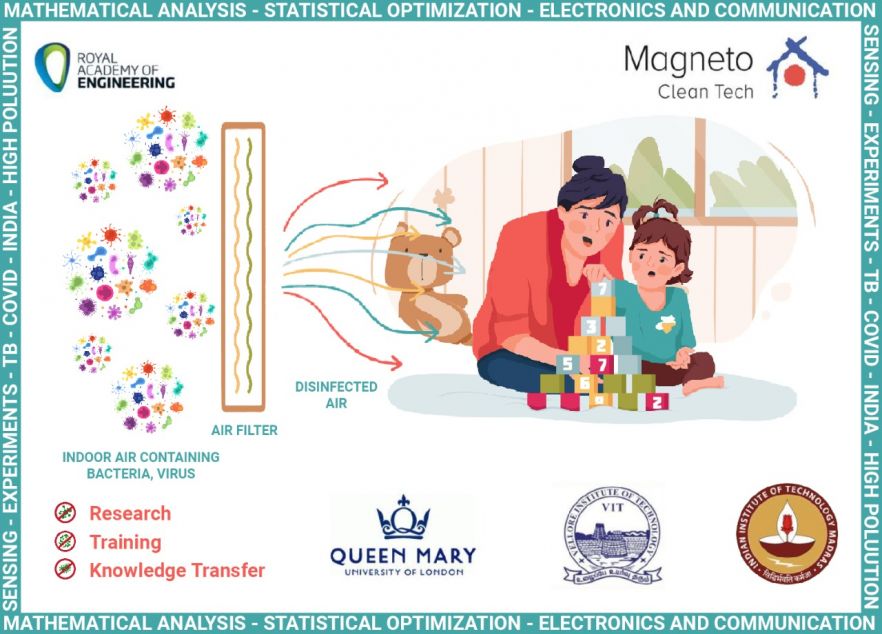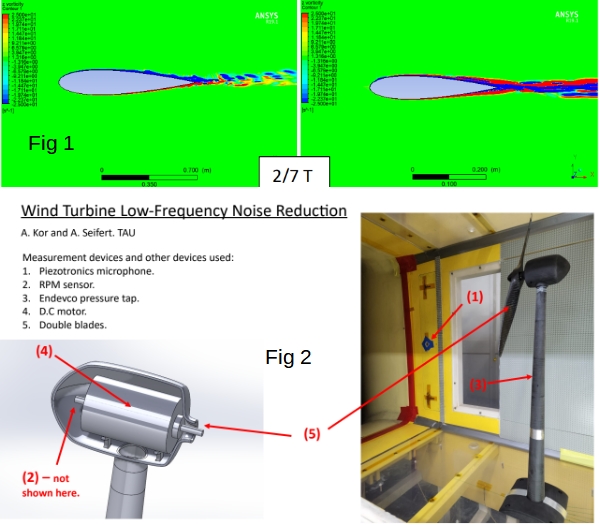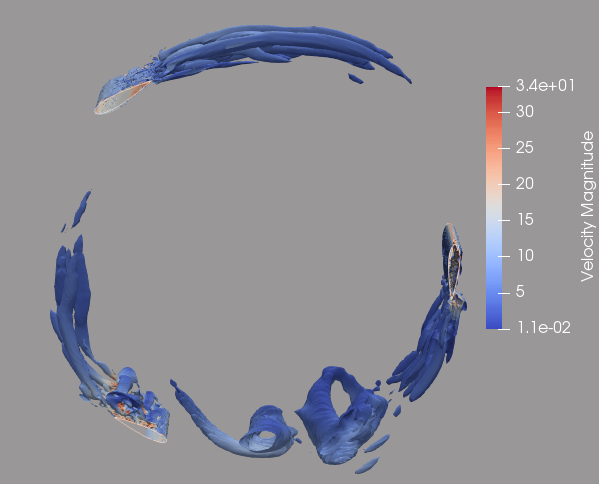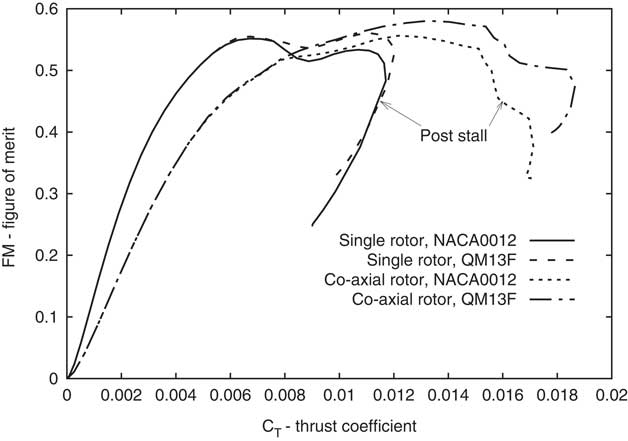Dr Eldad Avital
PhD, SMAIAA, SFHEA, FRAeS, CEng
Research Funding
On this page:
Current Funded Research Projects
Aeroacoustics of Dynamic StallFunding source: EPSRC Engineering and Physical Sciences Research CouncilStart: 01-09-2023 / End: 28-02-2027 Amount: £487,827 |
Experimental and analytical modelling of micro-fluidic devices for energy and smart machinesFunding source: BEIS Department for Business, Energy & Industrial StrategyStart: 01-04-2023 / End: 31-07-2024 Amount: £8,800 Micro-fluidic devices are of significant importance in a wide range of engineering fluid-systems from energy-applications as improving kinetic-turbine performance, noise control, bio-engineering to smart micro-machines design. This project will focus on two-strands of micro-fluidic systems for flow control and modelling of smart micro-machines composed of electro-thermal-kinetic particles. Both aspects are at the forefront of academic-research and innovation with engineering applications in renewables (wind/water), targeted medication delivery, biofluid system-support (e.g. blood-circulation) and morphing structures by controlling building-blocks of electro-thermal-kinetic particles, all being studied by QMUL & TAU. This study is supported by UUKi and DSIT. |
Previous Funded Research Projects
Disinfecting indoor air against diseases as COVID and TB in cities in the Indian subcontinentFunding source: Royal Academy of EngineeringStart: 15-04-2021 / End: 19-02-2024 The aim of this project is to develop an air filtration system for the Indian subcontinent with heavy pollution settings, while having air infection risk. Strategies of deployment and usage will be developed along with training of UK and Indian students, and knowledge transfer with industry. Our preliminary UVC air purifier design has been published in Fluids 2023, 8(4), 111; https://doi.org/10.3390/fluids8040111 |
Air Cleaning Technologies (ACT): design protocolFunding source: DOH Department of Health - GOV UKStart: 01-04-2021 / End: 30-09-2023 ACT is a multi-centred randomised control trial of two air disinfection technologies which have the potential to mitigate the airborne transmission of the Covid-19 virus within schools: Portable high efficiency particulate air (HEPA) filters Upper-room ultraviolet germicidal irradiation (ur-UVGI) 30 primary schools from across Bradford are trialling these technologies to assess both the feasibility and efficacy of using these in schools, see https://caer.org.uk/projects/air-cleaning-technologies-act/ |
Innovate blade aerodynamic technology for wind turbinesFunding source: British CouncilStart: 01-12-2021 / End: 31-07-2023 Innovate blade aerodynamic technology for wind turbines The project seeks collaboration to improve the aerodynamic and aeroacoustic performance of small to mid size wind turbines. Such turbines can harness wind energy available in urban and rural areas. Computational and experimental expertises of QMUL and TAU are joined to seek optimal configurations of passive and active control. The project includes: sharing research methodologies, joint academic research communications and follow-up with joint grant submissions. |
Wind and water turbines: Simulation of unsteady aerodynamic forces and theoretical modellingFunding source: Royal SocietyStart: 20-03-2019 / End: 19-03-2022 High fidelity flow-structural dynamics simulations of wind and water turbines will be pursued using advanced computing clusters and complemented by wind tunnel tests. The results will be analysed and used to derive new fast models that will support future development of new renewable energy devices extracting kinetic energy from the wind and water flows. |
Engineering X Pandemic PreparednessFunding source: Royal Academy of EngineeringStart: 15-07-2020 / End: 14-07-2021 Team: UK Principal Investigator: Dr Eldad Avital Partners: India – VIT Chenai Prof Nithya Venkatesan, IIT Madras Prof Abdus Samad Consultant: Emeritus Prof Clive Beggs, Leeds Beckett Researchers: QMUL PhD student: Yang Chen QMUL MEng team: Lidia Garcia, Muneeb Khawar, Ayman Mohammed, Maham Sandhu, Taylor Smith, Dena Rahman India research assistants: Rishav Raj, Mahesh Ravindra, Saket Kapse We develop a stand alone air disinfection device capable of inactivating the SARS-CoV-2 virus (Covid-19) and Mycobacterium tuberculosis (tuberculosis (TB)). The devise utilises a novel particle separation technology, which boosts the air disinfection capabilities of an ultraviolet-C (UV-C) light source, allowing much larger quantities of air to be purified than would normally be the case. If successful, the device will represent a step-change on current air disinfection technologies and should prove helpful in combating the transmission of airborne0 (aerosol) diseases such as Covid-19 and TB within buildings. Light in the UV-C region produces photons that are absorbed by nucleic acids (both DNA and RNA) to form dimers (fused base pairs) that impair replication of pathogenic viruses and bacteria [1], greatly reducing their ability cause infection. It has been shown that UV-C light can inactivate coronaviruses and thus there is good reason to believe that the SARS-CoV-2 virus will be susceptible to UV irradiation [2]. Similarly, it has been shown that TB can be inactivated using UV-C light [3]. Both TB and Covid-19 are infectious diseases that are transmitted via aerosolised respiratory droplets produced indoors. As such, UV-C air disinfection devices have great potential to inhibit the spread of these diseases in room spaces if used appropriately. However, such devices are limited by the small air flow rate that they can handle. This is because pathogenic microbes often require high UV irradiation doses, with the result that the air velocity through such devices needs to be very low, meaning that they can only disinfect small amounts of air. However, by utilising particle separation it is possible to greatly enhance the irradiation capabilities of the device, thus allowing much larger quantities of air to be disinfected. [1] Beggs CB (2002). A quantitative method for evaluating the photoreactivation of ultraviolet damaged microorganisms. Photochemical and Photobiological Sciences. 2002. 1: 431-437, https://doi.org/10.1039/B202801H [2] Beggs CB, Avital EJ (2020). Upper-room ultraviolet air disinfection might help to reduce COVID-19 transmission in buildings: a feasibility study. PeerJ 8:e10196, https://peerj.com/articles/10196/ [3] Escombe AR, et al (2009). Upper-room ultraviolet light and negative air ionization to prevent tuberculosis transmission. PLoS Med 6 (3), e1000043, https://doi.org/10.1371/journal.pmed.1000043 |
Simulation of unsteady aerodynamic forces and theoretical modellingFunding source: Royal SocietyStart: 20-03-2019 / End: 19-03-2021 |
Jet noise: characteristics of the instantaneous emission patternsFunding source: Royal SocietyStart: 16-03-2018 / End: 30-11-2019 To develop a model which is consistent with jet noise far field measurements of both spectra measured at different angles and 2-point far field correlations of the sound pressure. |
Non linear acoustics-structure interactionFunding source: General FusionStart: 01-05-2015 / End: 30-04-2018 High fidelity simulations of non-linear sound propagation in multiphase media of nuclear fusion reactor are pursued using QMUL CLithium and Y codes with support and collaboration of General Fusion. |
Propeller aerodynamics and acousticsFunding source: EPSRCStart: 01-12-2016 / End: 25-03-2017 Low fidelity modelling of coaxial propeller |
ATI Propulsion Theme SupportFunding source: E.P.S.R.C.Start: 01-12-2016 / End: 25-03-2017 |
Mouthspace Computational ModellingFunding source: Givaudan UK LtdStart: 04-12-2016 / End: 15-03-2017 Modelling human airways |
International Exchange Scheme: China 2013 NSFC. Aeroacoustics of jets and blades.Funding source: The Royal SocietyStart: 01-04-2014 / End: 31-03-2016 Computational and experimental studies of blade and jet noise are pursued through collaborative research with Beihang. |
DST-UKIERI Thematic Partnerships, Marine tidal energy supply to remote Indian islandsFunding source: The British CouncilStart: 01-03-2015 / End: 31-01-2016 Tidal turbines are investigated for suitability for remote islands, improved efficiency and control in collaboration with VIT and IIT Madars |
Other Research Projects
Water flows and wakes, marine energy and sediment transportA diverse programme focusing on challenging water flow problems of significant engineering interest has been developed. This includes: 1. Challenging water wakes studies of breaking waves, where a two-phase LES in-house code has been developed, achieving for the first time stable and accurate simulations for high Froude numbers (above one) for … |
Numerical Algorithms Development (Fluids and Acoustics):We have led the development of a few world leading algorthims, this includes: 1. Hydrodynamics: a. A new coupling of turbulent flow simulation (LES) with structural dynamics (DEM/FEM) though the immersed boundary method (Mujiza et al, 2012); this led to new wide Fluids-Structure Interaction capabilities ranging from… |
joint wind energy research project with VIT ChennaiA joint masters educational-research project between Queen Mary and Vellore Institute of Technology (VIT) in Chennai. The masters will research distributed wind energy for urban and rural requirements, integration and energy conversion. The project consortium also consists of Indian Institute of Technology (IIT) Madras India and Deutsche WindGuard India. About 20 UK and India master students will jointly pursue multidisciplinary research to find the requirements of small urban and rural users. Emphasis will be on wind resources, aerodynamic efficiency, control and integration with water pumping for energy storage and irrigation. The industrial partner and other stakeholders are expected to adopt new innovative designs that will also be disseminated through conferences and journals. The master students will go through a joint training programme that includes advanced topics in aerodynamics, mechanics, control, electro-mechanical design and system engineering, while also receiving complementary hands-on computational, analytical and experimental training |
Jet noise, jet/wing interaction, jet/fuselage interaction in cruise conditions, experimental validation of high-speed jet simulations |
Huaihe River 111 projectAddress the major challenge of managing immensely complex regulated river systems on very large scales. Specifically, the project focuses on managing channel networks for flood management, environmental objectives and water supply reliability. The Huaihe River Basin will be used as an example to assist in defining research areas and specific projects. |
High-resolution schemes for computational fluid dynamics, hyperbolic conservation laws, Monotonically Integrated Large Eddy Simulations for turbulent flows |
Computational aeroacoustics of high-speed jets |
Bio fluids high performance simulationBio-fluids are of great computational challenge. They involve complex geometry, two phase flows and non-Newtonian fluid properties. Developing the ability to predict these flows accurately and investigate their behaviour promises a new way of understanding abnormal conditions and development of remedies by reducing the time required for development and the … |
Aerodynamics of Fusion reactor designFundamental and applied computational research is carried out to investigate and enhance the efficiency of magnetized target fusion reactor design. The research is carried out in collaboration with General Fusion. |
Aerodynamics and acoustics prediction and controlThere is a growing interest in applying active flow and noise control in various engineering applications. 1. Jet noise continues to be a topic affecting aviation. In this context we have recently made two types of progress. The first is in collaboration with Cranfield university where we published a procedure to … |







